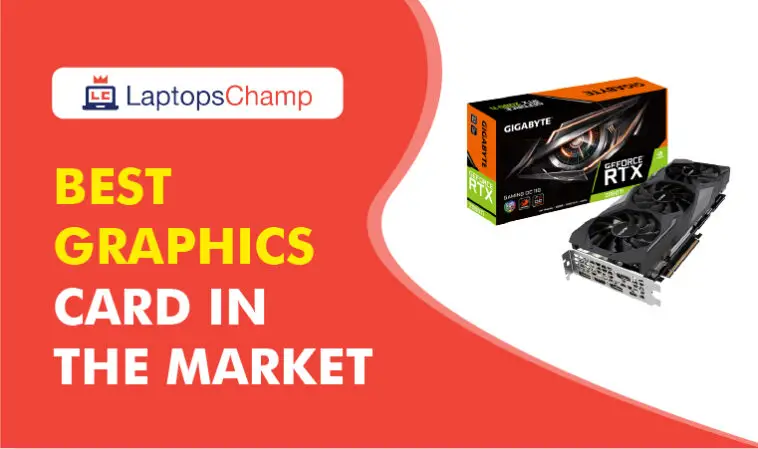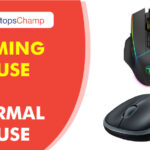Complete List: 10 Best Graphics Card in the Market
This article may include references and links to products and services from one or more of our advertisers. We may be paid compensation when you click on links to those products and/or services. As an Amazon Associate, we earn from qualifying purchases.
| Image | Product | Buy |
|---|---|---|
 | ASUS GeForce GTX 1050 Ti 4GB Phoenix Fan Edition DVI-D HDMI DP 1.4 Gaming Graphics Card (PH-GTX1050TI-4G) Graphic Cards | Buy on Amazon |
 | EVGA GeForce GTX 680 2048MB GDDR5, DVI, DVI-D, HDMI, DisplayPort, 4-way SLI Ready Graphics Card Graphics Cards 02G-P4-2680-KR | Buy on Amazon |
 | SAPPHIRE AMD Radeon HD 6870 1GB GDDR5 PCIE Graphics Card | Buy on Amazon |
 | EVGA GeForce GTX 550 Ti FPB 1024 MB GDDR5 PCI Express 2.0 2DVI/Mini-HDMI SLI Ready Graphics Card, 01G-P3-1556-KR | Buy on Amazon |
 | ASUS ENGTX560 TI DCII TOP/2DI/1GD5 GeForce GTX 560 Ti | Buy on Amazon |
 | Gigabyte Geforce GTX 1050 Ti 4GB GDDR5 128 Bit PCI-E Graphic Card (GV-N105TD5-4GD) | Buy on Amazon |
 | NVIDIA - GeForce RTX 3070 Ti 8GB GDDR6X PCI Express 4.0 Graphics Card - Dark Platinum and Black | Buy on Amazon |
 | ASUS ROG Strix NVIDIA GeForce RTX 3080 V2 OC Edition Gaming Graphics Card (PCIe 4.0, 10GB GDDR6X, LHR, HDMI 2.1, DisplayPort 1.4a, Axial-tech Fan Design, 2.9-Slot, Super Alloy Power II, GPU Tweak II) | Buy on Amazon |
 | NVIDIA GeForce RTX 3060 Ti Founders Edition 8GB GDDR6 PCI Express 4.0 Graphics Card | Buy on Amazon |
 | AMD Radeon RX 6800 XT Reference Edition Gaming Graphics Card | Buy on Amazon |
Investing in one of the top graphics cards for your computer will offer it the capability to run resource-demanding software smoothly, without interfering with your workflow, and enable you to bring your ideas to life. If you have one of these potent graphics cards, you may play games in gorgeous 4K surroundings without experiencing lag.
There are two different categories of graphics cards. Gamers are the primary market for consumer graphics cards. These can be as inexpensive as budget GPUs or as expensive as top-of-the-line cards, depending on the model. On the other side, professional graphics cards are extremely potent GPUs designed for professionals and frequently come at a high cost.
Halfway through 2022, the graphics card market is in a far better state than when the newest models from both firms were introduced less than two years earlier. Deals on graphics cards are currently available everywhere.
This article is dedicated to helping you, find the best graphics card in the market to fit your needs. I will do this by providing Graphics Card Reviews of what I consider to be some of the best quality and value-for-money graphics cards available today. You can get started by browsing some of our featured reviews in the table below.
1. ASUS GTX570 DirectCU II
Not only this, but you also get all of the fantastic features that ASUS can bring to the table. It’s the advanced cooling design that increases the lifespan of the card as well as its great overclocking software.
When it comes to finding the best graphics card on the market, the ASUS GTX570 DirectCU II is a strong contender. Released in 2010, this card boasts a number of impressive features that still hold up today, making it a popular choice among gamers and other high-performance users.
First and foremost, the ASUS GTX570 DirectCU II is a powerful card, with 480 CUDA cores and 1.28GB of GDDR5 memory. This means it can handle even the most demanding games and applications with ease, delivering smooth and responsive performance even at high resolutions and with advanced graphical effects enabled.
In addition to its raw power, the GTX570 DirectCU II also benefits from ASUS’s DirectCU II cooling technology, which helps to keep the card running at optimal temperatures even under heavy loads. The card features twin 80mm fans and five heat pipes, which work together to dissipate heat more efficiently than many other cooling systems on the market. This not only helps to extend the life of the card but also helps to reduce noise levels compared to many other high-performance cards.
Another standout feature of the ASUS GTX570 DirectCU II is its robust set of connectivity options. The card features a range of outputs, including two DVI ports, an HDMI port, and a DisplayPort, which allows it to connect to a wide variety of displays and monitors. This makes it a versatile choice for both gaming and productivity work, as it can handle multiple displays and high resolutions with ease.
Overall, the ASUS GTX570 DirectCU II is an excellent choice for anyone looking for a high-performance graphics card that can handle the latest games and applications. While it may not be the newest card on the market, its impressive specs and cooling technology make it a strong contender even in 2023.
For a full list of features as well as a complete review please be sure to read on.
NO 1

ASUS GTX570 DirectCU II Graphics Card
Specifications:
- Core clock speed: 742 MHz
- CUDA Cores: 480
- Memory clock: 3,800 MHz
- GDDR5: 320bit
- Max DVI resolution: 2560×1600
- Core clock speed: 742 MHz
- CUDA Cores: 480
- Memory clock: 3,800 MHz
- GDDR5: 320bit
- Max DVI resolution: 2560×1600
- Age: The GTX570 DirectCU II was released in 2010, which means it is now over a decade old. While it can still perform well for many applications, it may not have all the latest features and capabilities found in more modern cards.
- Power Consumption: The GTX570 DirectCU II can be relatively power-hungry compared to newer cards, which means it may require a more powerful power supply and may contribute to higher energy bills.
2. EVGA GTX 680
In this EVGA GTX 680 Review, we take a look at the most expensive graphics card which I’ve reviewed in this article. Although as I keep saying you certainly get what you pay for in most cases and this fantastic card from EVGA is no exception.
the EVGA GTX 680 was once considered a top performer. Although it was released back in 2012, it still holds up well today and can handle many modern games and applications with ease.
The EVGA GTX 680 features 1536 CUDA cores and 2GB of GDDR5 memory, which was considered impressive at the time of its release. It has a base clock speed of 1006 MHz and can boost up to 1058 MHz, making it a powerful option for gaming and other graphics-intensive tasks.
One standout feature of the EVGA GTX 680 is its support for NVIDIA GPU Boost technology, which automatically adjusts the clock speed to optimize performance while maintaining safe thermal limits. This helps to ensure that the card is always running at its best, without risking damage from overheating.
The EVGA GTX 680 also has a solid set of connectivity options, with two DVI ports, a DisplayPort, and an HDMI port, which allows it to connect to a wide range of displays and monitors. It also supports NVIDIA 3D Vision technology, which allows for immersive 3D gaming experiences.
One potential downside of the EVGA GTX 680 is its age. While it can still handle many modern games and applications, it may not have all the latest features and capabilities found in more modern cards. It is also relatively power-hungry compared to newer cards, which can result in higher energy bills.
Overall, the EVGA GTX 680 was once considered one of the best graphics cards on the market, and it still holds up well today for many applications. However, its age and limited capabilities make it less suitable for users who require the latest features and performance.
Yes, this is one of the most expensive graphics cards available today. But it’s also one of the fastest, most powerful, and the best graphics card on the market. one which features the most cutting-edge technology.
Certainly, this card is packed with a heap of impressive features so be sure to read on for a full list of features as well as a complete review.
NO 2

EVGA GTX 680 Graphics Card
Specifications:
- Base clock: 1006MHz
- Boost Clock: 1058MHz
- Memory clock: 6000MHz
- CUDA Cores: 1536
- GDDR5: 2048MB 256bit memory
- Base clock: 1006MHz
- Boost Clock: 1058MHz
- Memory clock: 6000MHz
- CUDA Cores: 1536
- GDDR5: 2048MB 256bit memory
- Limited VRAM: The card has 2GB of GDDR5 memory, which may not be sufficient for handling high-resolution textures and graphics-intensive games.
- Power Consumption: The EVGA GTX 680 can be relatively power-hungry compared to newer cards, which may require a higher wattage power supply and result in higher energy bills.
3. SAPPHIRE AMD Radeon HD 6870
This SAPPHIRE AMD HD 6870 Review is based on an AMD graphics card. It must be said this is one of the cheapest graphics cards which I’ve reviewed in this article.
However, don’t sell this graphics card short just yet because of its modest price. The card still comes jam-packed with features which will mean you can enjoy the greatly enhanced gaming and media experience that a decent graphics card can provide. Let’s now dive right into the full list of features for this graphics card;
es you a stable and reliable experience and allows you to control every aspect of your GPU easily. The benefits are numerous including the quick and easy addition and configuration of additional displays and enhanced quality of playback for videos being among the most relevant and popular.
NO 3

SAPPHIRE AMD Radeon HD 6870
Specifications:
- Engine Clock: 900 MHz
- Memory: 1GB GDDR5
- Memory Clock: 1050 Mhz
- Bandwidth memory:4 Gbps
- 2 TFLOPs compute power
- Engine Clock: 900 MHz
- Memory: 1GB GDDR5
- Memory Clock: 1050 Mhz
- Bandwidth memory:4 Gbps
- 2 TFLOPs compute power
- Limited Support: As the SAPPHIRE AMD Radeon HD 6870 is an older model, it may no longer be supported by the latest drivers and software updates, which can lead to compatibility issues with newer games and software.
- Noisy Fan: The card can be quite loud when running at full load, which can be distracting during gameplay or other demanding tasks.
4. EVGA GTX 550
Let me introduce the latest product entry in GeForce’s GTX500 series the GTX 550 Ti FPB. PC gaming enthusiasts need to look no further for hardware that will help them get the most out of this year’s heavily anticipated gaming titles.
The latest installment in GeForce’s entourage is set to improve on the mind-blowing visuals we see in today’s ever-evolving video entertainment sector. Not only that but you’re future-proof for the blockbuster titles of tomorrow as the GTX 550 boasts a 6x improvement factor on the efforts of the previous generation.
The GTX 550 will also exhibit exciting innovations. Such as, NVIDIA surround gaming, NVIDIA 3D Vision, NVIDIA PhysX, and customer support from the award-winning. EVGA will provide you with the ultimate in PC gaming entertainment with assured peace of mind included.
NO 4

EVGA GTX 550
Specifications:
- 951 MHz core clock
- 1024 MB 192-bit GDDR5 memory
- 4356 MHz memory clock
- 1903 shader clock
- 5 GB/sec memory bandwidth
- 4 GT/s texture fill rate
- 951 MHz core clock
- 1024 MB 192-bit GDDR5 memory
- 4356 MHz memory clock
- 1903 shader clock
- 5 GB/sec memory bandwidth
- 4 GT/s texture fill rate
- Limited VRAM: The card has 1GB of GDDR5 memory, which may not be sufficient for handling high-resolution textures and graphics-intensive games.
- Age: The EVGA GTX 550 is now over a decade old and may not have the latest features and performance capabilities found in more modern cards.
5. ASUS ENGTX560 TI
This ASUS ENGTX560 DCII Review is based on a great card from ASUS which is sure to delight. The best graphics card in the market is designed to deliver a high caliber of performance in modern PC gaming at an affordable cost.
The GTX 560 does just that and exhibits some remarkable features that truly secure its place alongside some of the best graphics cards in the market. The GTX 560 dishes out the optimal performance and power that gamers desire in full HD.
The product comes fully integrated with features such as DirectX11, NVIDIA CUDA, NVIDIA SLI, and NVIDIA 3D vision surround-ready. It’s the ability to take advantage of NVIDIA’s expanding retinue of advances and applications in video entertainment. It means this graphics card is a desirable purchase for any serious PC gamer.
NO 5

ASUS ENGTX560 TI
Specifications:
- 850 MHz core clock speed (factory overclocked)
- DirectCU II dual-fan cooling
- Superalloy power for a 15% performance boost and an interface known as voltage tweak which provides for a higher overclocking threshold.
- 850 MHz core clock speed (factory overclocked)
- DirectCU II dual-fan cooling
- Superalloy power for a 15% performance boost and an interface known as voltage tweak which provides for a higher overclocking threshold.
- Limited VRAM: The card has only 1GB of VRAM, which can limit its ability to handle high-resolution textures and graphics-intensive games.
6. Gigabyte GeForce GTX 1050
A powerful overclocking option is available with the Gigabyte GeForce GTX 1050. It has a one-click solution that greatly simplifies gameplay. Flexible connectivity makes it considerably simpler to concurrently configure and operate several monitors.
You can simply track practically every aspect of your GPU with features like Intuitive XTREME Engine Utility. The extreme cooling system that is a part of the Gigabyte GeForce GTX 1050 is something we loved.
The Gigabyte GeForce GTX 1050 ray tracing performance is a complete professional model used for gaming needs, according to user feedback. The NVIDIA chipset that comes with this smartphone is also incredibly powerful. The product is significantly simpler to set up and takes up much less room because it supports a low-profile design. The majority of people enjoy the features of Nvidia graphics cards.
NO 6

Gigabyte GeForce GTX 1050
Specifications:
- Video Output Interface: DisplayPort, HDMI
- Chipset Brand: NVIDIA
- Graphics RAM Type: GDDR5
- Graphics RAM Size: 4 GB
- Memory Speed: 7008 MHz
- allows for up to 4 screens
- Adaptable connection
- Low-profile style
- Limited VRAM: The card has 2GB of GDDR5 memory, which may not be sufficient for handling high-resolution textures and graphics-intensive games.
- Limited Performance: The Gigabyte GeForce GTX 1050 may struggle to handle modern games and graphics-intensive applications due to its limited capabilities.
7. NVIDIA GEFORCE RTX 3070
The best budget graphics card for most people
Credited with making 4K gaming affordable for the masses for the first time, the GeForce RTX 3060 is going to appeal to a whole host of people, even if it can’t quite equal the performance levels of the 3080 or 3090 models above it. You get ray tracing and Nvidia’s Deep Learning Super Sampling (DLSS) technology, plus that graphical horsepower, all for a relatively reasonable fee.
Keep your eye on prices though, because, with the RTX 3060 Ti’s best amd graphics card below it and the RTX 3080 above it, this may not be the best Nvidia card for your gaming rig, depending on how much you’re having to pay. While the RTX 3070 is undoubtedly a major jump over the generation that came before it, in terms of current-gen cards it’s a more crowded field.
Everyone is going to be at a different point along the price vs performance graph when it comes to picking out a graphics card upgrade, but we think the Nvidia GeForce RTX 3070 affordable Nvidia graphics card is going to win a lot of fans even with some stiff competition. It could be the Ampere graphics card that suits your budget and your gaming requirements the best.
NO 7

NVIDIA GEFORCE RTX 3070
Specifications:
- Nvidia CUDA Cores: 2,304
- Core Clock: 1.5 GHz (1.73 GHz boost)
- Memory: 8GB GDDR6
- Memory interface width: 256-bit
- Ports: 1 x HDMI 2.1, 3 x DisplayPort 1.4a
- Nvidia CUDA Cores: 2,304
- Core Clock: 1.5 GHz (1.73 GHz boost)
- Memory: 8GB GDDR6
- Memory interface width: 256-bit
- Ports: 1 x HDMI 2.1, 3 x DisplayPort 1.4a
- High Power Consumption: The card can be relatively power-hungry compared to other mid-range cards, which may require a higher wattage power supply and result in higher energy bills.
- High Temperatures: The NVIDIA GEFORCE RTX 3070 can run quite hot under load, which may require additional cooling measures to prevent overheating.
8. ASUS ROG STRIX NVIDIA GEFORCE RTX 3080
The GeForce RTX 3080 from Nvidia is quite simply a powerhouse of a graphics card, offering 4K, 60 fps next-gen gaming performance for your rig. It strikes a price vs performance balance between the RTX 3070 and the RTX 3090 and is the way to go if you want to be able to ramp up the graphical bells and whistles without completely clearing out your bank account (depending on the size of your bank account balance).
The card is so popular that it’s proving rather hard to get hold of at the time of writing. If you don’t want to pay an inflated sum to a reseller – and we wouldn’t recommend doing so – then you’re going to have to be patient and committed in your pursuit of one, keeping a close eye on retailers and their stock levels. Thankfully, the shortage does now seem to be easing a little.
Specs-wise you get a significant improvement over what the RTX 3070 can offer in graphics settings, so if you’re able to pay the premium price (and find one in stock) then you get to enjoy those AAA games at the best resolutions and frame rates. As with all the newer Nvidia Ampere cards, you get ray tracing and Deep Learning Super Sampling (DLSS) included to make your games pop.
NO 8

ASUS ROG STRIX NVIDIA GEFORCE RTX 3080
Specifications:
- Nvidia CUDA Cores: 8,704
- Core Clock: 1.44 GHz (1.71 GHz boost)
- Memory: 10GB GDDR6X
- Memory interface width: 320-bit
- Ports: 1 x HDMI 2.1, 3 x DisplayPort 1.4a
- Nvidia CUDA Cores: 8,704
- Core Clock: 1.44 GHz (1.71 GHz boost)
- Memory: 10GB GDDR6X
- Memory interface width: 320-bit
- Ports: 1 x HDMI 2.1, 3 x DisplayPort 1.4a
- Limited Availability: Like many other high-end graphics cards, the ASUS ROG STRIX NVIDIA GEFORCE RTX 3080 is currently in high demand and may be difficult to find in stock.
- High Power Consumption: The card is relatively power-hungry compared to other mid-range cards, which may require a higher wattage power supply and result in higher energy bills.
9. NVIDIA GEFORCE RTX 3060 TI
The Nvidia GeForce RTX 3060 Ti amd graphics card is hardly the cheapest graphics card on the market, but it does give you the most affordable way into the GeForce RTX 30 series – and yet it still performs to a level that’s going to be more than enough for gamers that find they can do without the top-tier 4K and 8K resolutions available on the cards that are further up in the Nvidia Ampere range.
This card won’t get you top-tier 4K performance in the very best games on the market at the moment, but it will bring with it very decent frame rates in even the most demanding games at 1080p, and you get the power of ray tracing and Deep Learning Super Sampling (DLSS) acceleration. As long as you have a more modest display, this graphics card is going to do you proud.
If you’re shopping at this price point, there’s nothing really that competes with the Nvidia GeForce RTX 3060 Ti for the time being, even if the 8GB of onboard RAM is a little on the low side. It’s the card that proves once and for all that you can get very decent performance from a graphics upgrade without spending too much.
NO 9
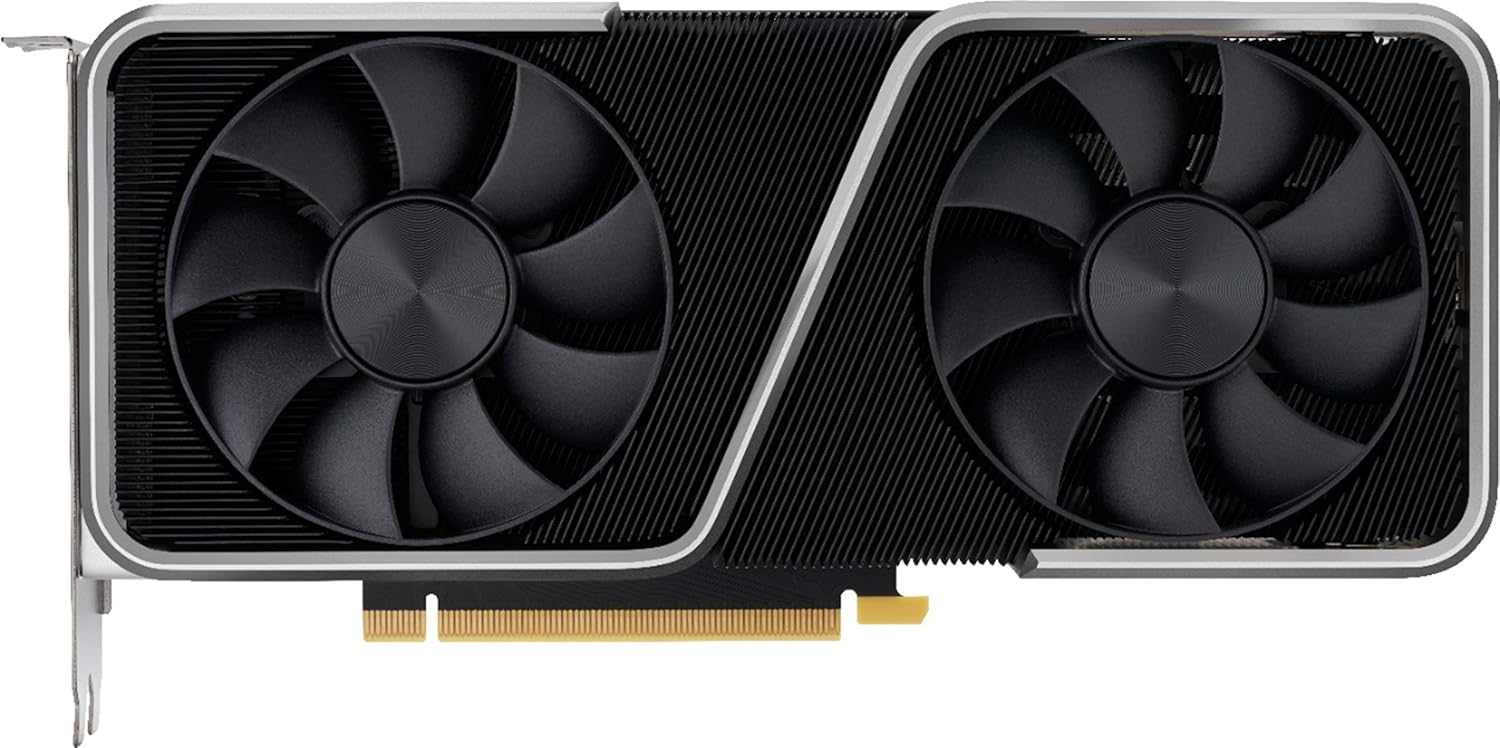
NVIDIA GEFORCE RTX 3060 TI
Specifications:
- Nvidia CUDA Cores: 4,864
- Core Clock: 1.41 GHz (1.67 GHz boost)
- Memory: 8GB GDDR6
- Memory interface width: 256-bit
- Ports: 1 x HDMI 2.1, 3 x DisplayPort 1.4a
- Nvidia CUDA Cores: 4,864
- Core Clock: 1.41 GHz (1.67 GHz boost)
- Memory: 8GB GDDR6
- Memory interface width: 256-bit
- Ports: 1 x HDMI 2.1, 3 x DisplayPort 1.4a
- Expensive: The NVIDIA GEFORCE RTX 3060 TI is a mid-range card and comes with a relatively high price tag, which may not be feasible for all budgets.
- Ray Tracing Performance: While the NVIDIA GEFORCE RTX 3060 TI has impressive ray tracing capabilities, its performance may not be as strong as higher-end cards, which may limit its ability to handle the most demanding games and applications.
10. AMD RADEON RX 6800
Welcome back to the big leagues, AMD: the Radeon RX 6800 marks the tech giant’s return to the high-end graphics market, where it’s looking to compete head-to-head with Nvidia. Like the slightly more powerful (and expensive) XT variant, the AMD Radeon RX 6800 brings along with it some powerful 4K gaming chops.
There’s plenty of video RAM to play around with here, as well as some specialized AMD tweaks that should make your gaming titles zip along. It might not get the absolute top scores in terms of benchmarks, but if you’re looking to get some heavy-duty frame rates on the best games without paying a heavy-duty price, then this card is definitely worth a place on your shortlist.
Thanks to the impressive performance improvements ushered in with the arrival of the Big Navi (or Navi 21 or RDNA2) technology from AMD, you don’t have to worry about performance being an issue with this card installed in your rig. There’s decent overclocking performance here as well if you’re keen to push your card even further once it’s installed.
NO 10

AMD RADEON RX 6800
Specifications:
- Stream processors: 3,840
- Core Clock: 1.815 GHz (2.105 GHz boost)
- Memory: 16GB GDDR6
- Memory interface width: 256-bit
- Ports: 1 x HDMI 2.1, 1 x DisplayPort 1.4
- Stream processors: 3,840
- Core Clock: 1.815 GHz (2.105 GHz boost)
- Memory: 16GB GDDR6
- Memory interface width: 256-bit
- Ports: 1 x HDMI 2.1, 1 x DisplayPort 1.4
- Limited Ray Tracing Performance: While the AMD RADEON RX 6800 has ray tracing capabilities, its performance may not be as strong as some of the high-end NVIDIA cards, which may limit its ability to handle the most demanding ray-traced games and applications.
- Driver Issues: Some users have reported issues with drivers for the AMD RADEON RX 6800, which may result in performance issues or stability problems.
How can these best graphics card reviews help you?
Are you a casual gamer looking to improve your gaming experience with the perfect graphics GPUs usually referred to as graphics cards, which have two functions in computers? In games, they use their hardware power to calculate the ideal frame rate and resolution for the ever-impressive on-screen action, accelerating 3D images.
Graphics cards may dramatically speed up rendering times for digital arts such as animation, graphic design, illustration, and 3D modeling. Certain artistic tools can be significantly enhanced with the correct graphics hardware. Even certain effects are too much for a CPU to manage on its own.
Additionally, you should be aware that each graphics card includes a general reference model that is typically not offered for purchase. I’m sure I can help you to find the best graphics card in the market that’s right for you.
The reviews of graphics cards that I provide are factual, honest, and as detailed and concise as possible. My aim with these reviews is to grant you a true understanding of the cards’ strengths. Main advantages and indeed the inevitable weaknesses and drawbacks which some graphics cards will have.
This article is not about trying to sell you a graphics card. It’s about researching and honestly reviewing graphics cards to provide you with an objective understanding and hopefully aid you in your search for the right graphics card.
Conclusion
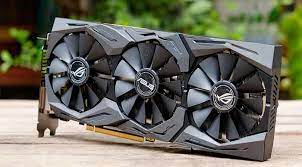
A good and well-suited graphics card can not only make a world of difference to your gaming. It also to your productivity if you should happen to work from your PC as well.
In terms of gaming, our graphics card reviews should help you. Choose a card that will add to your experience by making it all the more realistic and immersive. It is what games are all about at the end of the day!
Also in terms of productiveness, many graphics cards available today offer unique features. Such as being able to run multiple monitors from one card. It means you’ll have a massive workspace of up to 3 or more monitors. You should require it and all from one graphics card!
You can get started with our graphics card today’s best deals and reviews by either browsing some of the reviews in the leading digital publisher table above or other future brands.
Frequently Asked Questions
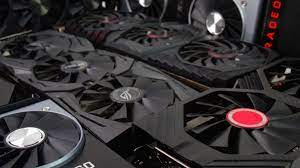
1. Can a graphics card die?
Answer: A graphics card is just like any other video interface card. Yes, it may provide you with the best support. However, this device also has a chance of wearing out as well. The work rate of any GPU depends on the heatsink. If it is too hot, the GPU will die.
2. How do I remove my graphics card?
Answer: Some of the graphics cards do come up with an easy setup and install option with ultra settings. Most of them are directly clipped to the motherboard. However, you can always easily push the clip to remove the card.
3. Can a laptop have 2 graphics cards?
Answer: Configuration with laptops is not a difficult thing to ask for. If you need to do 3D work, you can easily get a configuration done with two graphics cards simultaneously.


